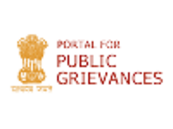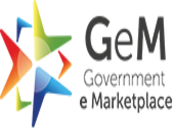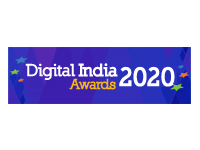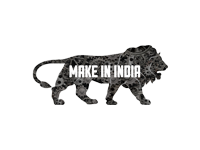A regional workshop on `Informetrics and Scientometrics' was organized by the Documentation Research & Training Centre (DRTC) Banglore and co-sponsored by the National Information System for Science and Technology (NISSAT), New Delhi at DRTC from 16-19 March 1998. This regional workshop gathered over 60 participants from around the Indian sub-continent including scientometric researchers, information and library educators, current undergraduate students in information-related courses, doctoral and masters candidates. Originally intended as a select workshop for about 25 participants, the overwhelming interest expressed by information scientists resulted in increased number of participants. This high response indicates that, in India, participation in informetrics and scientometrics is very much alive and thriving.
Prof. I.K. Ravichandra Rao, the Convenor of the Workshop also brought out the volume of the Proceedings.
Rationale and Purpose of the Workshop
The purpose of the Workshop was two fold, research communication and education of the new generation of research. From the research perspective, there was a good array of new reports of research projects from well-known scholars, descriptions of research-in-progress, and papers that outlined research plans and research designs including explorations of methodology and related problems. The themes covered were : Informetrics-foundation and empirical laws; citation analysis; science indicators; mathematical modelling; scientific productivity and collaborative research; research process; data analysis, growth and obsolescence; and the scientific impact of journals. Many of the papers had an educative role because they summed up knowledge in an area, especially useful for the many postgraduates and novice researchers who attended the Workshop.
International and National Participants and Guests
Two international visitors participated in the discussions, Dr Hildrun Kretchmer from
Germany and Dr Mari Davis from Australia. Dr.Kretchmer spent about five weeks in New Delhi working at the National Institute of Science, Technology and Development Studies (NISTADS) before coming to the DRTC, Bangalore and contributing to the Workshop. All other participants were nationals many of whom also had travelled great distances.
Themes and Papers
Scientific Productivity and Collaboration
In the scientific productivity and Collaboration stream, Dr Kretchmer (Germany) presented two linked papers entitled: `Collaboration in Science since Three Centuries' and `Changing Conditions of the Research Process and the `Adaptation of the Collaboration Structure'. Dr Kretchmer first presented an historical look at the nature of collaboration in research and the social processes and characteristics of collaborative work. She outlined the theoretical perspective on scientific collaboration taken by De Beaver and Rosen in their study of scientific publications in the 19th century, specifically in France, Germany and England.
She took off from the studies by Beaver & Rosen. Kretschmer presented some graphical representations of collaboration using hierarchical trees, level upon level, visualised as patterns in a kind of `fingerprint' by which she is able to show changes to the structural development of scientific collaboration in specific fields over time. Kretschmer from a psycho-social perspective indicate that the forms of social relations resulting from collaborative work shape the form of the collaboration. She illustrated these forms by using the traditional sayings `birds of a feather flock together' and `opposite attract' to describe characteristics and patterns observed in collaborative relationships as demonstrated by different bibliographies. This is exciting new exploratory work where Kretschmer uses theories from sociology and psychology to inform her bibliometric work. Kretschmer's second paper expanded on the first by considering research groups as adaptable systems `bound together by writing'. Kretschmer eschews previous findings of a linear correlation between productivity and collaboration; she adopted a new approach that involves a different kind of correlation that assumes a non-linear and complex relationship between collaboration and performance. Kretschmer described briefly the results from a pilot study of 56 research groups in which the new approach was tested. The two papers were challenging stuff.
Case Studies of Scientific Productivity
On the theme of science productivity, A.Vagiswari (Indian Institute of Astrophysics, Bangalore) explored the various challenges and issues in counting publications (articles) of a scientific field. The advantages and limitations of adjusted count compared to straight count method were outlined. She concluded with some brief comments about the findings of a study of the productivity of Indian astrophysicists. Several bibliometric case studies were presented. P. Suma (DRTC, Bangalore) presented the results of her study of the engineering literature using the Compendex database.
Informetric Laws
Several state-of-the-art lectures were given by Prof. Rao (DRTC, Bangalore) on the foundation laws of informetrics covering the scope, methodologies, and conceptual questions of the field. The topic of growth and obsolescence of publications and the importance of library circulation statistics in bibliometric work were also described by Professor Rao. These lectures were supported by other contributors whose papers further discussed these themes. For example, a paper from Subir Sen (Calcutta) on the law of scattering, and a very clear presentation from Dr. Aparnu Basu, (NISTADS, New Delhi) on mathematical modelling and applications in informetrics.
On the theme of informetric laws, Professor N.S.S. Narayana (ISI, Bangalore), an econometrician, gave new insights and analysis on the scope and utility of Price's Law, and the Lotka and Bradford Laws from an informetric outsider's perspective. Following a mathematical analysis of these laws, Narayana dwelt on the importance of measuring or documenting improved levels of social welfare resulting from growth in scientific productivity. He linked the social welfare aspect strongly to the ultimate goal of devising proper policies for the management and funding of science.
Science and Technology Indicators
Several papers dealt with science and technology indicators. The first by S. Pruthi and K.C. Garg (NISTADS, New Delhi) gave an overview of types of indicators and the models on which they are based. The authors commented on the types of data used in the input phase of developing S&T indicators and the comparability of such data for science planning and research policy throughout the world.
The necessity of continuing to develop indicators of science and technology performance to help with policy questions was dealt with by Prof. S. Arunachalam (M.S. Swaminathan Research Institute, Chennai) when he spoke of the science policy implication of scientometrics. He illustrated his lecture with research findings and indicators relating to India's contribution to world science bringing in illustrations from his long experience of science in India. He addressed the issue of the building of reliable and comparable science indicators in order to map science contributions and particularly for developing a sense of both international and national scientific progress.
Sujit Bhattacharaya (NISTADS, New Delhi) presented some results of his work in mapping the field of `condensed matter physics'. He described the methods used to develop science indicators in this particular branch of physics and presented some of the maps and other data relating to his investigation.
P. Pichappan (Annamalai University) presented his work on monitoring the performance of R&D laboratories in a changing industrial climate. His paper presented a framework for evaluation performance using not only numerical data on numbers of papers, patents or citations but also on broad (qualitative) assessments of contribution to the economy.
Use of Qualitative Methodologies in Informetrics
Two papers presented by Mari Davis (University of New South Wales, Australia) described informetric projects that in the main used qualitative methods. She spoke of a research project that aims to get "behind" the citation process to observe how researchers read, write and cite, and to gather information about how they view the citation and what role they believe it plays in their scholarly communication.
In a second paper, Davis described a project in which quality of journal content and the identification of quality assurance processes in journal editing were the focus. She described the survey instrument, which was sent to journal editors worldwide, and the particular survey items that predicted best the categories of editorial process that provided assurance of consistent high-quality outcome.
Quantitative Methods Using ISIS Software
In developing countries where access to software and computer power is often difficult to obtain, it is important to know what kinds of shareware and universally applicable systems are available. A paper by M.P. Tapaswi and B.S. Maheswarappa (National Information Centre for Marine Sciences, Goa) described the creation of a bibliographic database using CDS/ISIS. Their project examined the history of science in India and they described how they developed their data sets and met the requirements of bibliometric analysis of the data using the ISIS software.





















